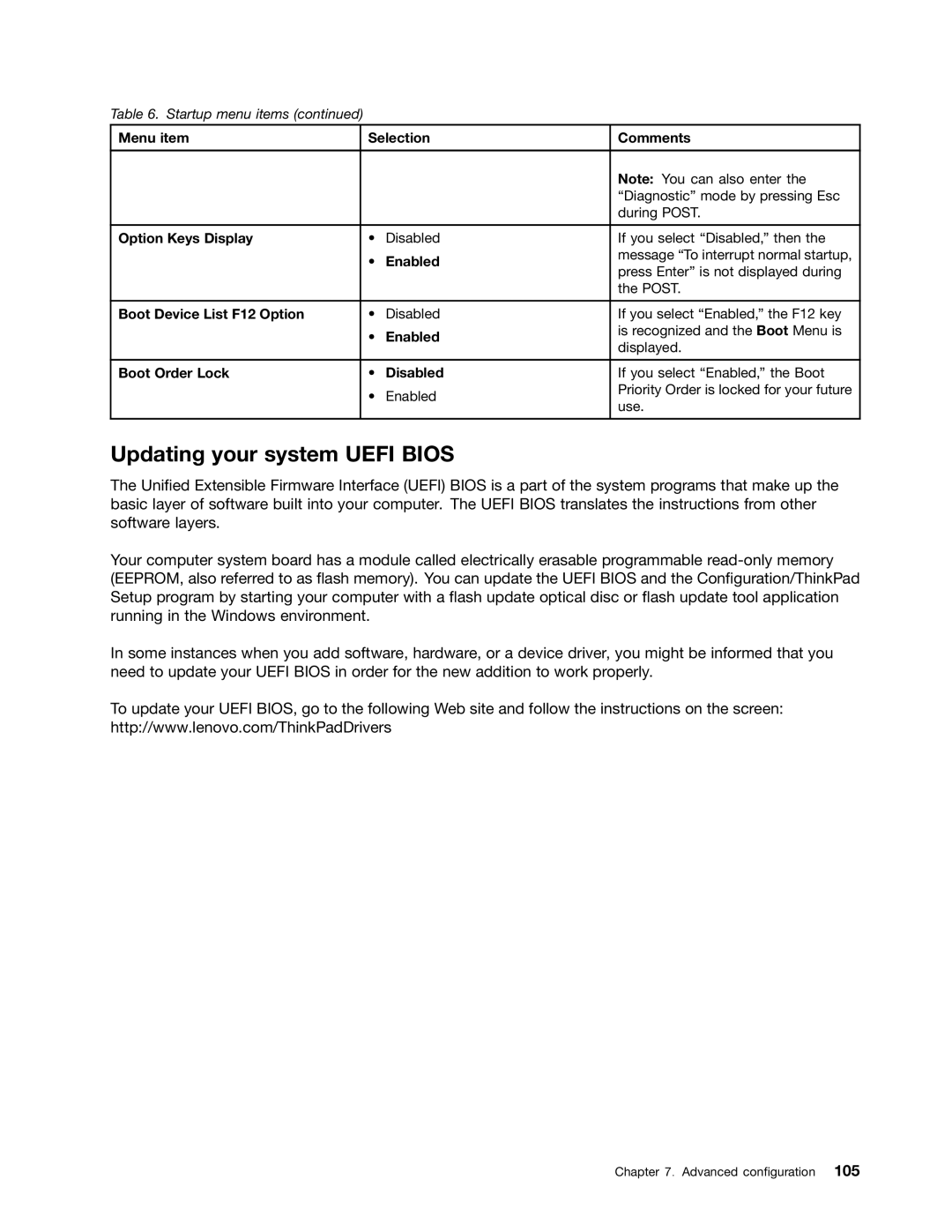Table 6. Startup menu items (continued)
Menu item | Selection | Comments | |
|
|
|
|
|
|
| Note: You can also enter the |
|
|
| “Diagnostic” mode by pressing Esc |
|
|
| during POST. |
|
|
|
|
Option Keys Display | • | Disabled | If you select “Disabled,” then the |
| • | Enabled | message “To interrupt normal startup, |
| press Enter” is not displayed during | ||
|
|
| |
|
|
| the POST. |
|
|
|
|
Boot Device List F12 Option | • | Disabled | If you select “Enabled,” the F12 key |
| • | Enabled | is recognized and the Boot Menu is |
| displayed. | ||
|
|
| |
|
|
|
|
Boot Order Lock | • | Disabled | If you select “Enabled,” the Boot |
| • | Enabled | Priority Order is locked for your future |
| use. | ||
|
|
| |
|
|
|
|
Updating your system UEFI BIOS
The Unified Extensible Firmware Interface (UEFI) BIOS is a part of the system programs that make up the basic layer of software built into your computer. The UEFI BIOS translates the instructions from other software layers.
Your computer system board has a module called electrically erasable programmable
In some instances when you add software, hardware, or a device driver, you might be informed that you need to update your UEFI BIOS in order for the new addition to work properly.
To update your UEFI BIOS, go to the following Web site and follow the instructions on the screen: http://www.lenovo.com/ThinkPadDrivers
Chapter 7. Advanced configuration 105
